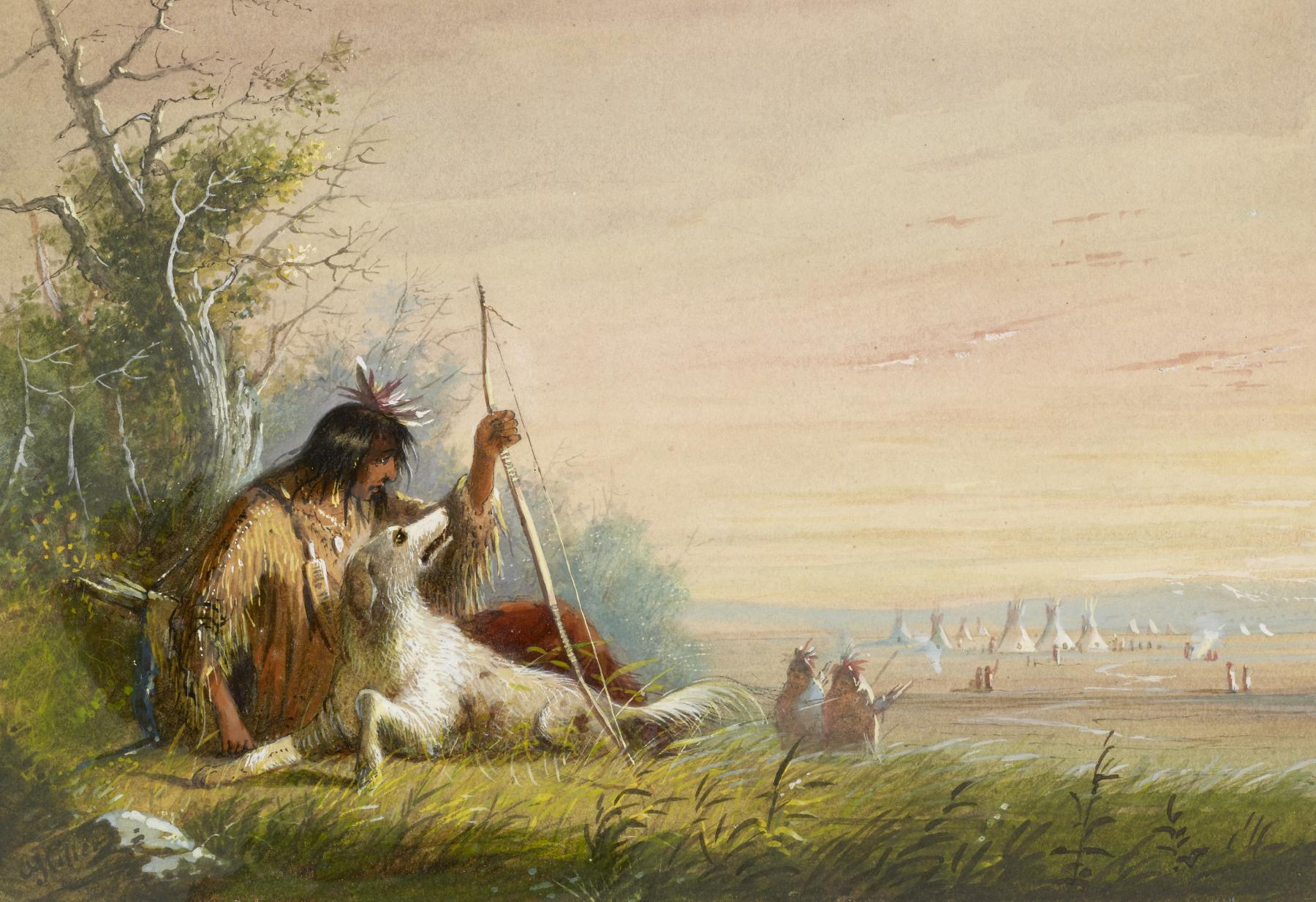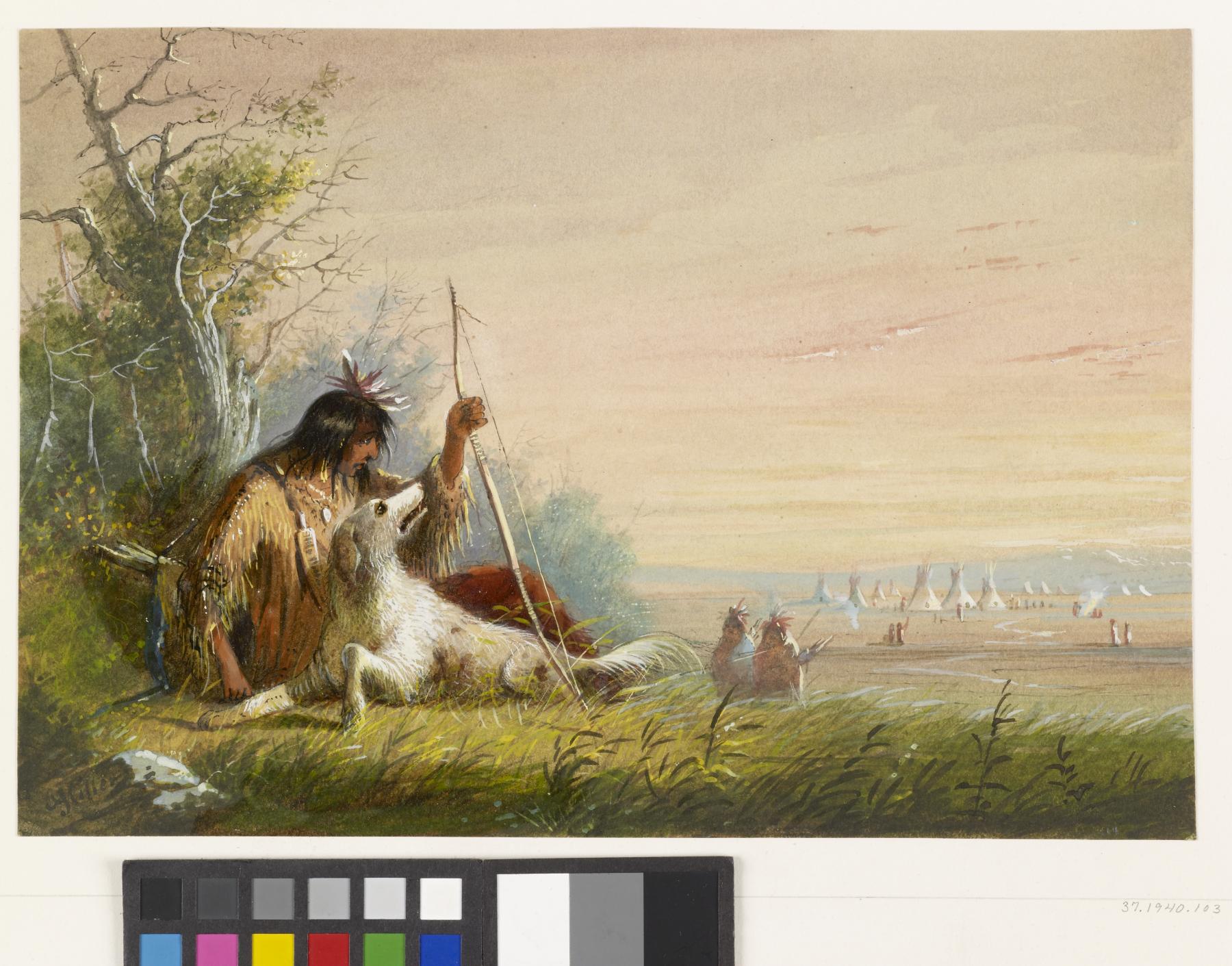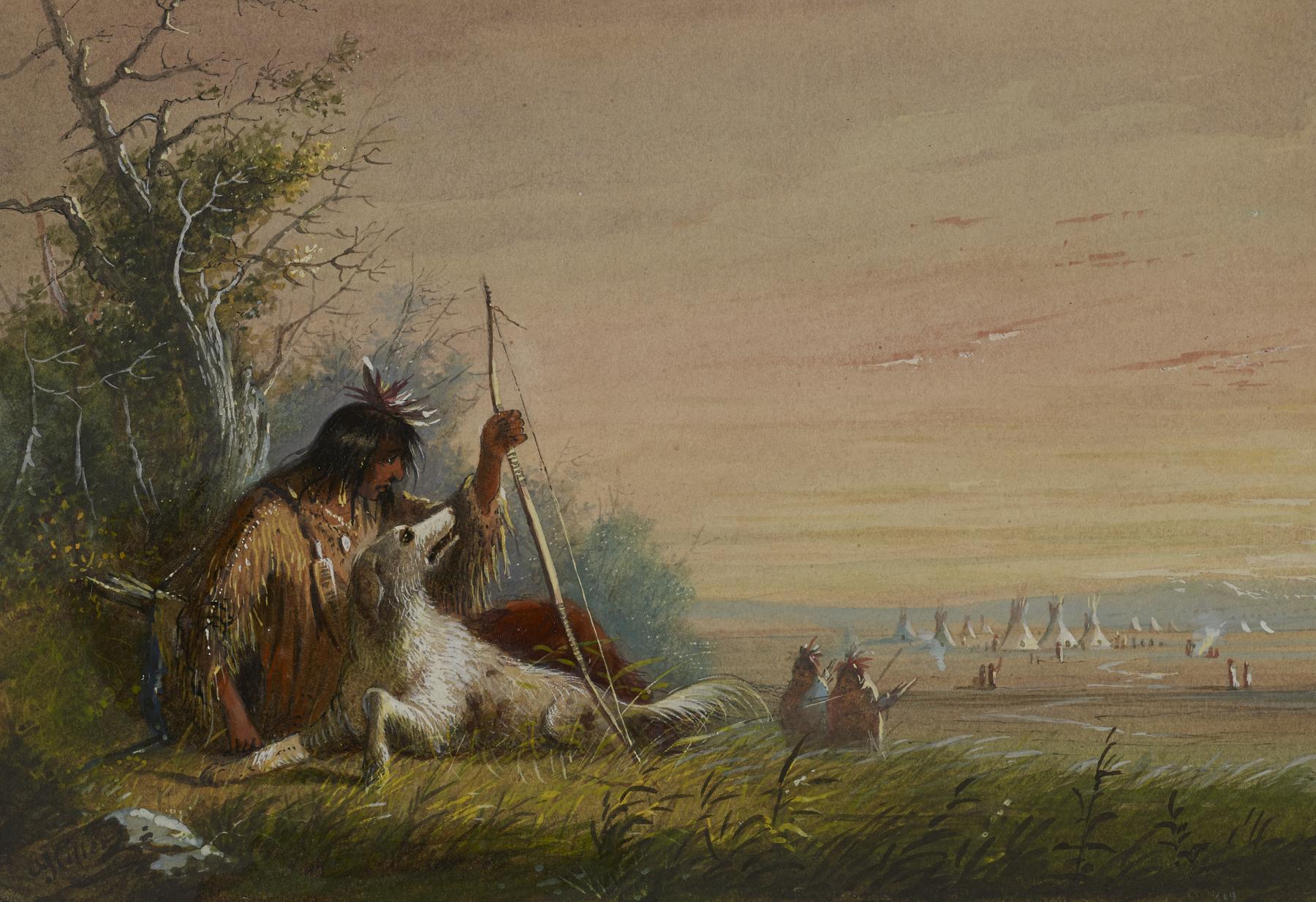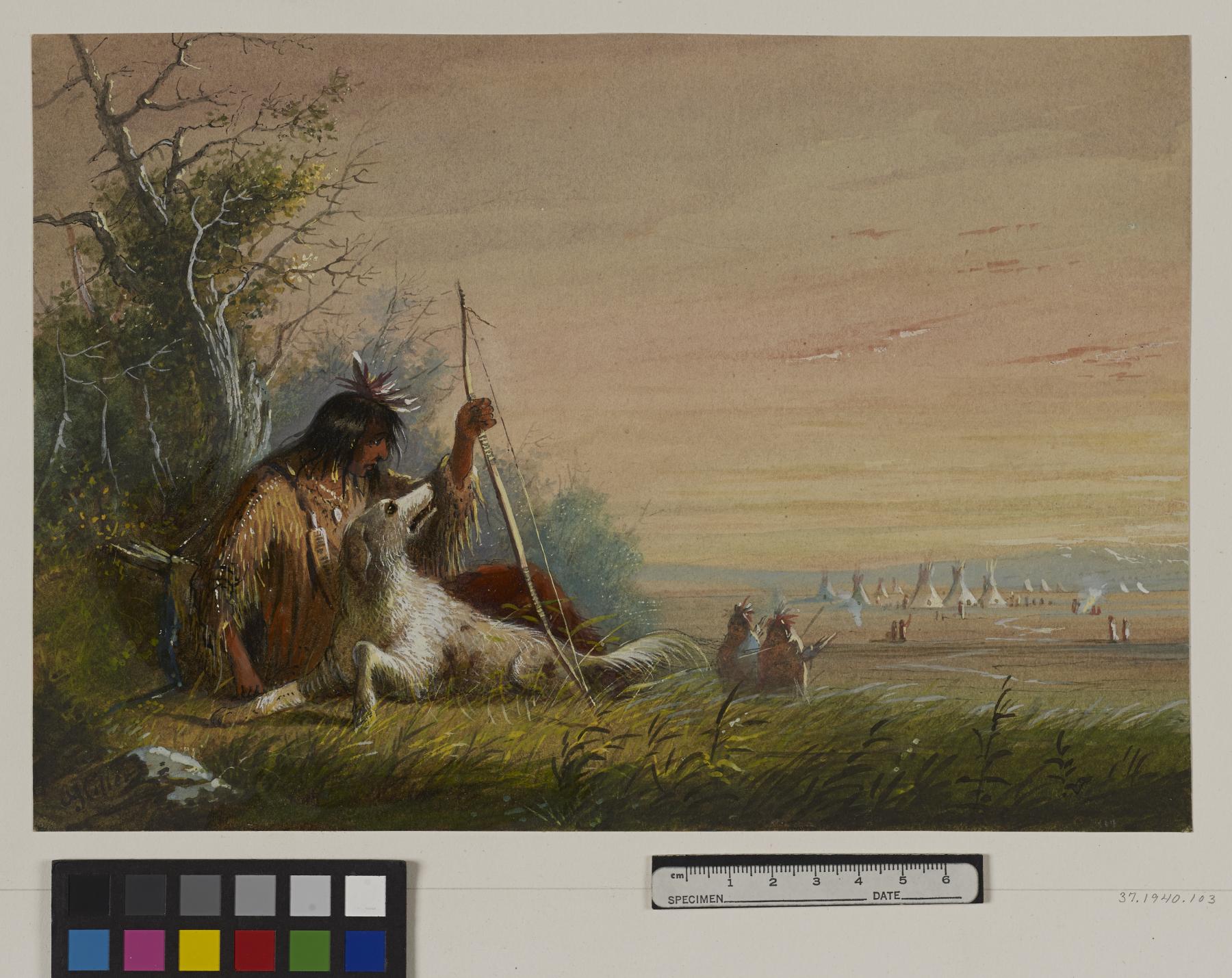Indian Runner
(18th and 19th Centuries )
Extracts from Alfred Jacob Miller’s original text, which accompanied his images of Native Americans, are included below for reference. These words, which shaped how Miller’s contemporaries viewed the watercolors, reveal the racism and sexism embedded in 19th-century exploration and colonization of the western part of what is today the United States.
"It becomes a matter indispensable at times that a communication should take place with a different tribe, either as preliminary to a treaty, to form a truce, or a proposal to bury the hatchet and smoke the pipe of peace;- the tribe proposing this last remedy, you may always rest assured, has had the worst of the matter in battle. An Indian runner is selected, noted for craftiness and cunning, who is straightway dispatched on the delicate mission. Coming in sight of the belligerent or rival camp, he does not at once enter their villiage, but seats himself within sight, and here remains patiently until a deputation is sent out to meet him. During the time of waiting, he does not know whether his reception will be friendly, or whether they will lead him to the stake for torture. If the last mentioned should be decided on, he at once braces himself up, and meets his fate in a manner that would shame any Christian, for faith in his own belief, and fortitude under suffering,- he sings his song of defiance, and dies exulting." A.J. Miller, extracted from "The West of Alfred Jacob Miller" (1837).
In July 1858 William T. Walters commissioned 200 watercolors at twelve dollars apiece from Baltimore born artist Alfred Jacob Miller. These paintings were each accompanied by a descriptive text, and were delivered in installments over the next twenty-one months and ultimately were bound in three albums. Transcriptions of field-sketches drawn during the 1837 expedition that Miller had undertaken to the annual fur-trader's rendezvous in the Green River Valley (in what is now western Wyoming), these watercolors are a unique record of the closing years of the western fur trade.
Inscription
Provenance
Provenance (from the French provenir, 'to come from/forth') is the chronology of the ownership, custody, or location of a historical object. Learn more about provenance at the Walters.
William T. Walters, Baltimore, 1858-1860, by commission; Henry Walters, Baltimore, 1894, by inheritance; Walters Art Museum, 1931, by bequest.
Conservation
| Date | Description | Narrative |
|---|---|---|
| 7/15/1964 | Treatment | re-housed |
Geographies
USA (Place of Origin)
Measurements
Sheet: H: 7 5/16 x W: 10 5/8 in. (18.5 x 27 cm)
Credit Line
Commissioned by William T. Walters, 1858-1860
Location in Museum
Not on view
Accession Number
In libraries, galleries, museums, and archives, an accession number is a unique identifier assigned to each object in the collection.
In libraries, galleries, museums, and archives, an accession number is a unique identifier assigned to each object in the collection.
37.1940.103











